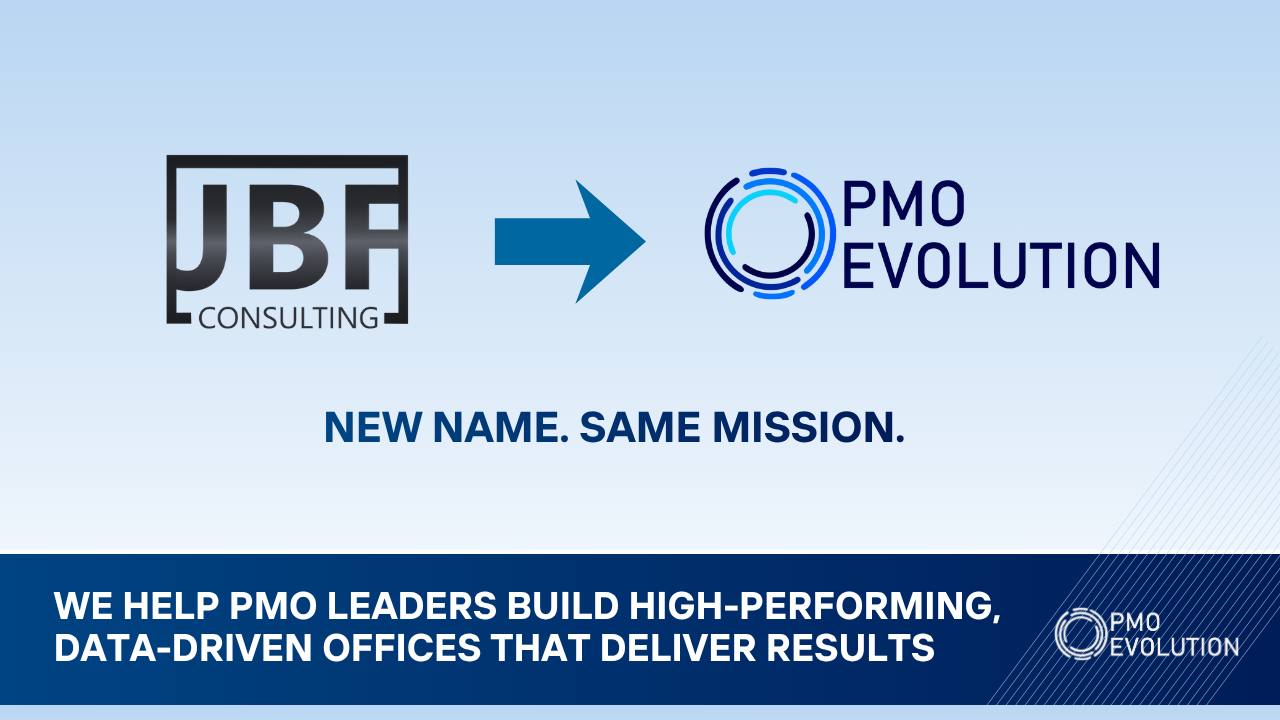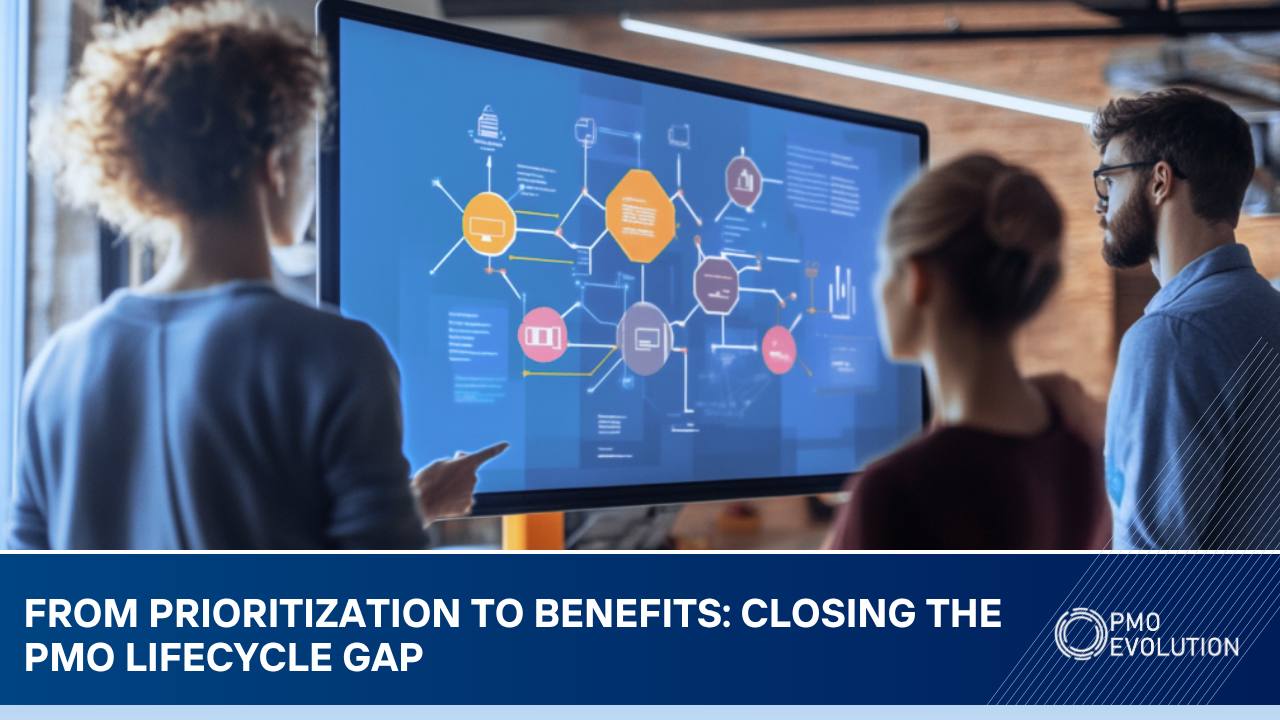AI in the PMO: From Buzzwords to Practical Tools That Save Time
Everywhere I go lately, someone’s talking about AI. The exec team brings it up in strategy meetings. Consultants throw around bold claims. Conference speakers make it sound like the magic button every PMO’s been waiting for.
I use AI a lot in my own work. It’s made a real difference in how I lead my portfolios. But when I talk to other PMO leaders, I notice something: Most of them aren’t actually saving time. They’re still buried in dashboards. Still chasing updates. Still stuck in the same reporting loops they’ve been trying to streamline for years.
The issue isn’t that AI doesn’t work. It’s that the way people talk about it lives way up here in strategy decks and big visions while PMO reality sits down here in the day-to-day grind. This isn’t about chasing transformation. It’s about something way simpler.
Time.
The Moment It Hit Me
A few months ago, I sat in a steering committee meeting. The agenda was packed. Our portfolio forecast was already behind schedule, our team was scrambling to finalize status updates, and someone threw in a curveball: “Why aren’t we using AI to automate all of this?”
I smiled politely. Because I’d heard this line at least ten times in the past year. “Why aren’t we using AI?” sounds visionary. But what it really means in a PMO context is: “Why can’t we produce perfect information instantly?”
It’s easy to buy into the hype. But as a PMO leader, I don’t have the luxury of living in theoretical frameworks. I have delivery deadlines. I have project managers with bandwidth issues. I have executive decks due by Friday. That was the moment I realized: if AI was going to be part of our PMO, it wouldn’t be because we chased shiny objects. It would be because it gave us time back.
The Real Problem: AI Hype Is Too Far from PMO Reality
AI in the enterprise is a noisy space. Between software vendors, internal champions, and endless webinars, it’s easy to feel like you’re falling behind if you don’t have a “PMO AI strategy” yet.
But here’s what most people won’t admit:
-
AI is being discussed at strategic levels while the PMO operates in executional realities.
-
Vendors promise end-to-end automation, but PMOs need targeted, reliable wins.
-
Most PMO teams don’t have the bandwidth to test every new tool thrown at them.
-
AI pilots are often underfunded and over expected.
I’ve seen too many PMOs jump into AI with no clear value path. A shiny chatbot here, an automated dashboard there, a few scripts someone found on LinkedIn and nothing sticks. Why? Because the problem isn’t lack of tools. The problem is lack of focus.
Shifting the Lens: My Rule for AI in the PMO
When I decided to bring AI into my PMO, I drew a line in the sand: If it doesn’t save us time in the next 90 days, it doesn’t make the cut. Not “maybe later.” Not “it could help if everyone adopts it.”
I started asking sharper questions:
-
Does this tool reduce the hours we spend on manual status updates?
- Does it simplify forecasting or scenario planning?
-
Does it make reporting less painful and more accurate?
-
Can my team use it without becoming AI engineers?
That mindset shift changed everything. Instead of chasing trends, we started building practical use cases and the impact was immediate.
Where AI Actually Works in the PMO
AI isn’t a silver bullet. But in the right places, it’s a force multiplier.
Here’s where I’ve seen it make a real difference:
📌 Intake & Demand Management
We used to triage new project ideas manually. Dozens of emails. Endless clarifications. Now, a simple AI-assisted intake process classifies incoming requests by type, effort, and alignment with portfolio goals.
-
Fewer back-and-forth emails
-
Faster routing to decision-makers
-
Clearer prioritization upfront
📌 Status Reporting
Every PMO leader knows the pain of chasing project managers for updates. With AI-assisted summarization, weekly updates get transformed into standardized status reports in minutes.
- No more formatting chaos
- Consistent tone and structure
- Reports delivered on time
📌 Forecasting & Scenario Planning
Our portfolio forecasting used to be a spreadsheet jungle. AI models now help us model impacts of slippages, resource constraints, or funding changes instantly.
-
What-if scenarios in real time
-
Faster response to leadership questions
-
Less time spent on manual calculations
📌 Stakeholder Communications
We started using AI to generate summaries and highlight risks for executive updates. Instead of overexplaining or underexplaining, AI surfaces the right level of insight:
- Clearer, sharper messaging
- Consistent narratives
- Less prep time before meetings
These aren’t moonshot projects. They’re small, targeted injections of AI that free up real hours. And for a PMO leader, hours are everything.
How to Start: A Practical Playbook for PMO Leaders
If your PMO hasn’t implemented AI yet, or your first attempt fizzled out, here’s the approach that worked for us:

What to Avoid: Lessons Learned the Hard Way
I won’t pretend it was smooth. We stumbled too.
Here are the traps I see PMO leaders fall into again and again:
-
Shiny Object Syndrome — Testing every new AI app instead of focusing on value.
-
No Change Enablement — Forgetting your team needs time and clarity to adopt new tools.
-
Lack of Guardrails — Letting AI outputs flow into executive decks without review.
-
Overpromising to Leadership — Committing to savings before proving the use case.
These mistakes don’t just slow down adoption. They damage trust. And in a PMO, trust is everything.
The Executive Layer: Politics, Pressure, and Expectations
Bringing AI into a PMO isn’t just a technical decision, it’s a political one.
Executives expect results. Fast. They’ve read the same Forbes articles and heard the same keynote speeches. They want the PMO to look modern and act efficient. But they often don’t see the layers of operational complexity underneath.
I learned early on:
- Frame AI as a time saver, not a disruption.
- Tie every use case to a leadership pain point (e.g., faster answers, cleaner reporting).
- Don’t oversell — overdeliver.
The best way to keep executive support is to show them time savings in action.
Once they saw how AI-generated reporting cut our prep time by 40%, they stopped asking for proof. They started asking, “What’s next?”
Translating AI into Strategic Value
Here’s the thing: AI in the PMO isn’t about technology at all. It’s about giving your team the capacity to do more strategic work. When reporting takes less time, your team can focus on analysis. When intake is automated, your portfolio review cycles accelerate. When forecasting runs in minutes, you can pivot faster to changing priorities.
And suddenly, the PMO isn’t just a reporting machine. It’s a strategic ally. That’s the real win.
When people ask me, “How do I get my PMO started with AI?” I don’t talk about platforms or plugins. I talk about time. Because when PMO leaders stop losing hours to low-value work, everything else gets easier. AI doesn’t have to be a buzzword. It can be your most practical tool.
If you’re ready to move past the buzzwords and actually save time in your PMO, I’d love to talk.
Let’s map your first practical AI use case. Because the future of the PMO isn’t about bigger reports or flashier tools. It’s about giving PMO leaders their time back so they can lead.







